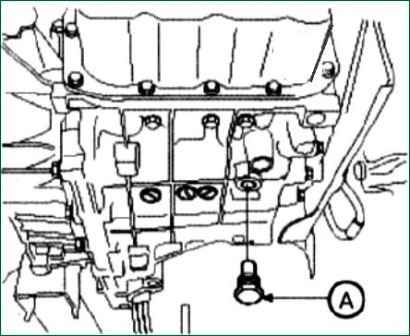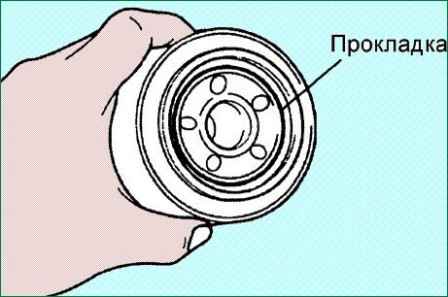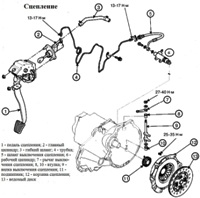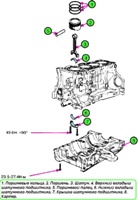Checking the oil level in automatic transmission
Before checking the oil level, you need to drive the car so that the oil in the gearbox warms up to an operating temperature of 70-80°C
After that, we install the car on a flat horizontal surface
On a car with the engine running, we move the gearbox selector one by one to all positions one by one so that the torque converter is filled with oil, and set the selector to the neutral position "N"
Remove the dipstick to measure the level in the gearbox

Gear oil level should be at the "HOT" mark
If the level is below the required level, it is necessary to add gear oil
It is necessary to fill in Diamond ATF SP-III, SK ATF SP-III brand oil.
The volume of oil in the automatic transmission is 8.5 liters.
If the automatic transmission fluid has a burnt odor or is contaminated with bushing material or friction, the transmission may need to be overhauled.
Check the color of the automatic transmission fluid.
Check the automatic transmission fluid for unusual odors.
To determine the change in color and smell of the liquid, compare it with fresh liquid.
A low fluid level can cause many problems as air enters the fluid and the air-liquid mixture becomes compressible, resulting in erratic pressure changes and failure of clutches and band brakes.
Elevated fluid levels also cause the rotating gears of the transmission to whip up foam, which has the same results as air trapped in the transmission fluid.
In any case, air bubbles lead to overheating and oxidation of the transmission fluid, which, getting into the valves, disrupts the operation of the clutch and brakes. Foaming may cause liquid to leak out, which may be mistaken for a liquid leak.
Insert the dipstick securely.
Transmission fluid and oil filters should always be changed when a transmission is overhauled.
Automatic transmission oil change
If you are changing the torque converter fluid, also change the transmission fluid.
If the torque converter fluid is not being changed, change the transmission fluid as follows.
- Disconnect the hose that connects the gearbox and the oil cooler (radiator side).
- Start the engine and drain the fluid.
Condition: The engine must be idling and the selector lever must be in position N.
When performing this action, the engine must be turned off within 1 minute.
If all the fluid is drained out earlier than within 1 minute, the engine should be stopped at this point.

Remove the drain plug from the gearbox housing base and drain the fluid.
Change oil filters.
Install the drain plug with gasket and tighten. Tightening torque: 32 Nm
Fill in the required amount of the required liquid.
Stop filling fluid if the required amount cannot be filled into the gearbox.
Repeat the procedure according to step 2.
Check the old fluid for contamination. If the liquid is contaminated, repeat steps (6) and (7).
Fill in the required amount of the required fluid.
Connect the hose that was disconnected in step (1) and insert the dipstick securely.
Start the engine and let it idle for 1-2 minutes.
With the engine running, move the selector lever from N to all positions and back to N.
Drive until the transmission has warmed up to 70-80°C. Park your car on a level surface.
Check the fluid level, which should be between the HOT marks. If necessary, add the required amount of the required liquid.
Insert the dipstick securely.
Changing the automatic transmission oil filter
Move the air filter and unscrew the automatic transmission oil filter with a wrench.

Using gloves and a clean rag after draining the fluid, clean the gearbox housing from dirt.
Clean the mounting surface of the filter bracket.

Lubricate the O-ring of the new oil filter with a small amount of transmission fluid.
Install the automatic transmission oil filter.
Tightening torque: 11-13 Nm
Check the transmission fluid level.









